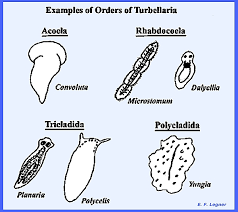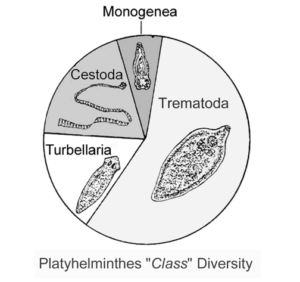Back to: ZOOLOGY 200 Level
Welcome back! I’m truly glad to be with you on this exciting learning journey. Today’s lesson takes us deeper into the world of flatworms, as we look at the Characteristics and Classes of Platyhelminthes, specifically Turbellaria, Trematoda, and Cestoda. These creatures may be small, but they reveal a lot about biology, adaptation, and survival. Let’s get started!
Characteristics and classes (Turbellaria, Trematoda, Cestoda)
General characteristics of Platyhelminthes
Platyhelminthes, commonly known as flatworms, are a group of simple, soft-bodied invertebrates. As their name suggests, they have flattened bodies from top to bottom, which allows for efficient exchange of gases and nutrients through their skin. They do not have body cavities (acoelomates), and their digestive system—when present—has only one opening for both ingestion and egestion.

These animals show bilateral symmetry, meaning their left and right sides are mirror images. Flatworms have three body layers (triploblastic) and can be either free-living or parasitic. They also lack specialised circulatory and respiratory systems, relying on diffusion to move oxygen and nutrients around their bodies.
Turbellaria
Turbellarians are mostly free-living flatworms and are often found in freshwater, marine environments, or moist terrestrial habitats. One common example is Dugesia, the planarian.
They are known for their remarkable regenerative abilities—if a planarian is cut into pieces, each piece can grow into a new worm. Turbellarians have simple eyespots that can detect light and a brain-like cluster of nerve cells, showing the beginnings of a central nervous system.
They feed on small organisms or decaying matter using a muscular pharynx, which can extend outside the body. Turbellarians are important in understanding early animal evolution and nervous system development.
Trematoda
Trematodes, or flukes, are parasitic flatworms that infect the internal organs of various hosts, including humans. They have complex life cycles involving multiple hosts. A good example is Schistosoma, the blood fluke, which causes schistosomiasis—a significant health issue in parts of Africa, including Nigeria.
Trematodes are covered in a tough outer layer called a tegument, which protects them from their host’s immune system. They have suckers that help them attach to the host’s tissues. Their reproductive systems are highly developed, often producing thousands of eggs to ensure survival across different hosts.
Cestoda
Cestodes, or tapeworms, are highly specialised internal parasites that live in the intestines of vertebrates. A common example is Taenia solium, the pork tapeworm. Unlike other flatworms, cestodes lack a digestive system entirely. Instead, they absorb nutrients directly through their body surface from the host’s digested food.

Cestodes are made up of a head region called the scolex, which has hooks and suckers for attachment, and a long body composed of repeating units called proglottids. Each proglottid contains male and female reproductive organs, allowing the worm to produce a large number of eggs. These eggs are shed in the host’s faeces, continuing the cycle.
Summary
Platyhelminthes are simple, flat-bodied animals with no body cavity and bilateral symmetry. The class Turbellaria includes mostly free-living flatworms like planarians. Trematoda consists of parasitic flukes such as Schistosoma, while Cestoda includes internal parasites like tapeworms. Each class has adapted uniquely to survive in its environment, showcasing fascinating biological diversity.
Evaluation
- List three general characteristics of Platyhelminthes.
- What feature allows turbellarians to regenerate?
- Describe the lifestyle and adaptation of trematodes.
- How do cestodes obtain nutrients without a digestive system?
You’re really mastering these essential concepts in Zoology. The world of flatworms may seem simple, but their adaptations are truly impressive. Keep up the great work, and remember—Afrilearn is always here cheering you on. Ready for the next big idea?
